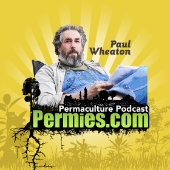








"the qualities of these bacteria, like the heat of the sun, electricity, or the qualities of metals, are part of the storehouse of knowledge of all men. They are manifestations of the laws of nature, free to all men and reserved exclusively to none." SCOTUS, Funk Bros. Seed Co. v. Kale Inoculant Co.
















Brenda
Bloom where you are planted.
http://restfultrailsfoodforestgarden.blogspot.com/









 But this is strictly from memory ... I'll have to dig out my notes to verify, so correct me if I'm wrong. I'm looking at this as a "pop quiz"!!
But this is strictly from memory ... I'll have to dig out my notes to verify, so correct me if I'm wrong. I'm looking at this as a "pop quiz"!! 
Permaculture is a gestalt ... a study of the whole. Not just how to produce more and better food, but how human life on the planet affects and is affected by the surrounding environment.
Bill Kearns












Brenda
Bloom where you are planted.
http://restfultrailsfoodforestgarden.blogspot.com/










|
Shiny ad:
Freaky Cheap Heat - 2 hour movie - HD streaming
https://permies.com/wiki/238453/Freaky-Cheap-Heat-hour-movie
|



